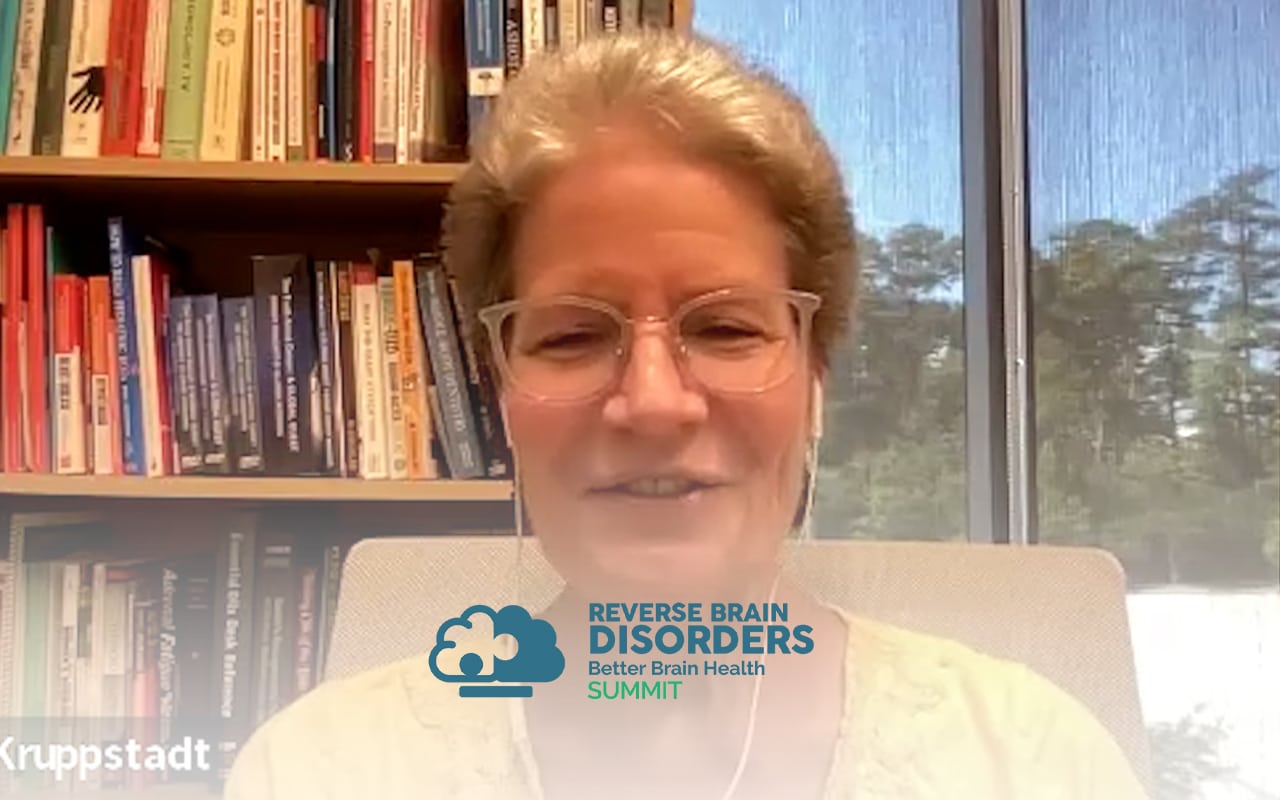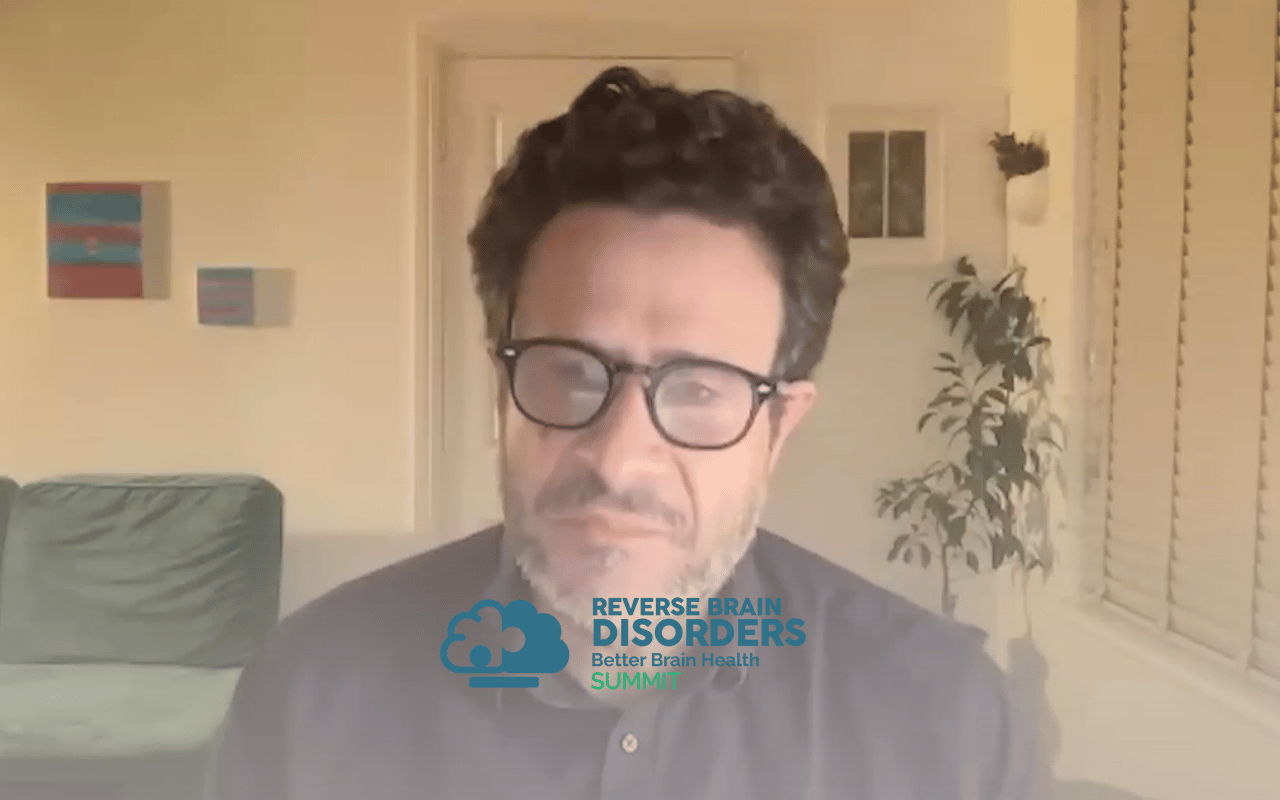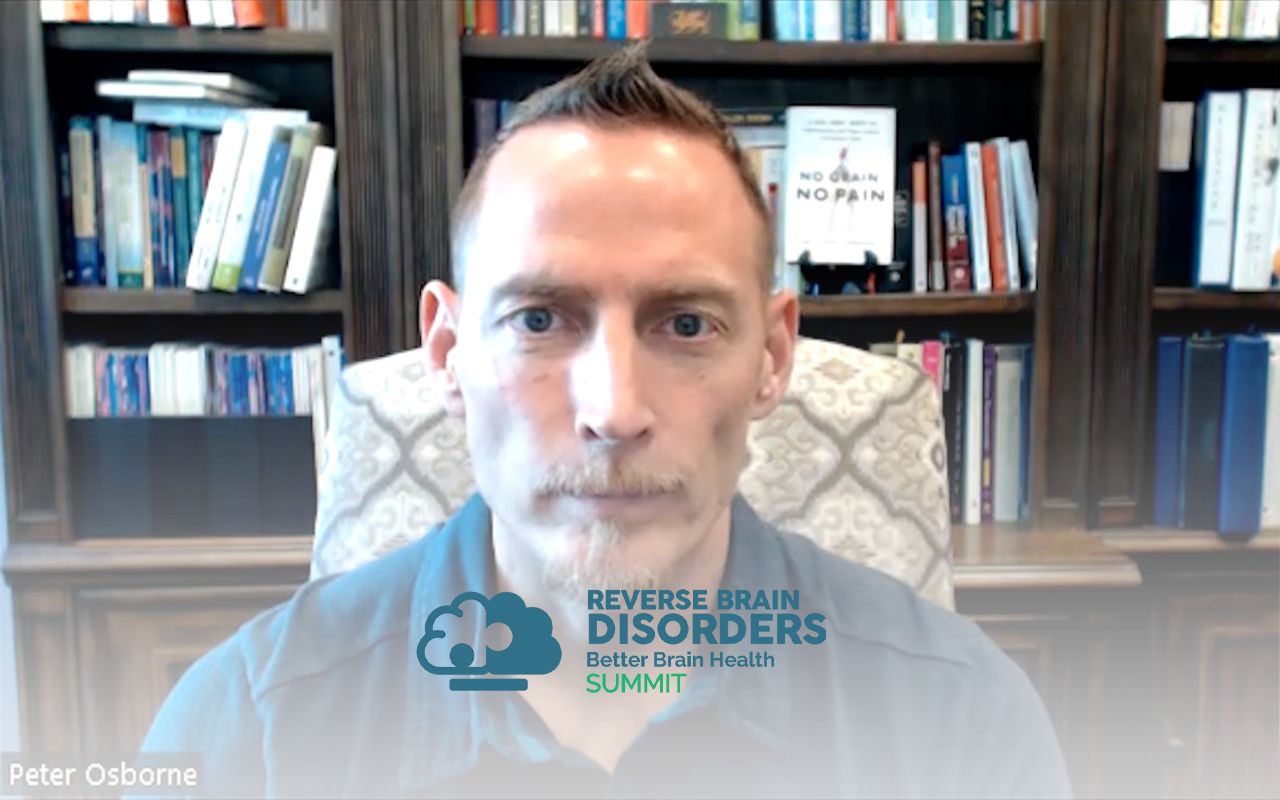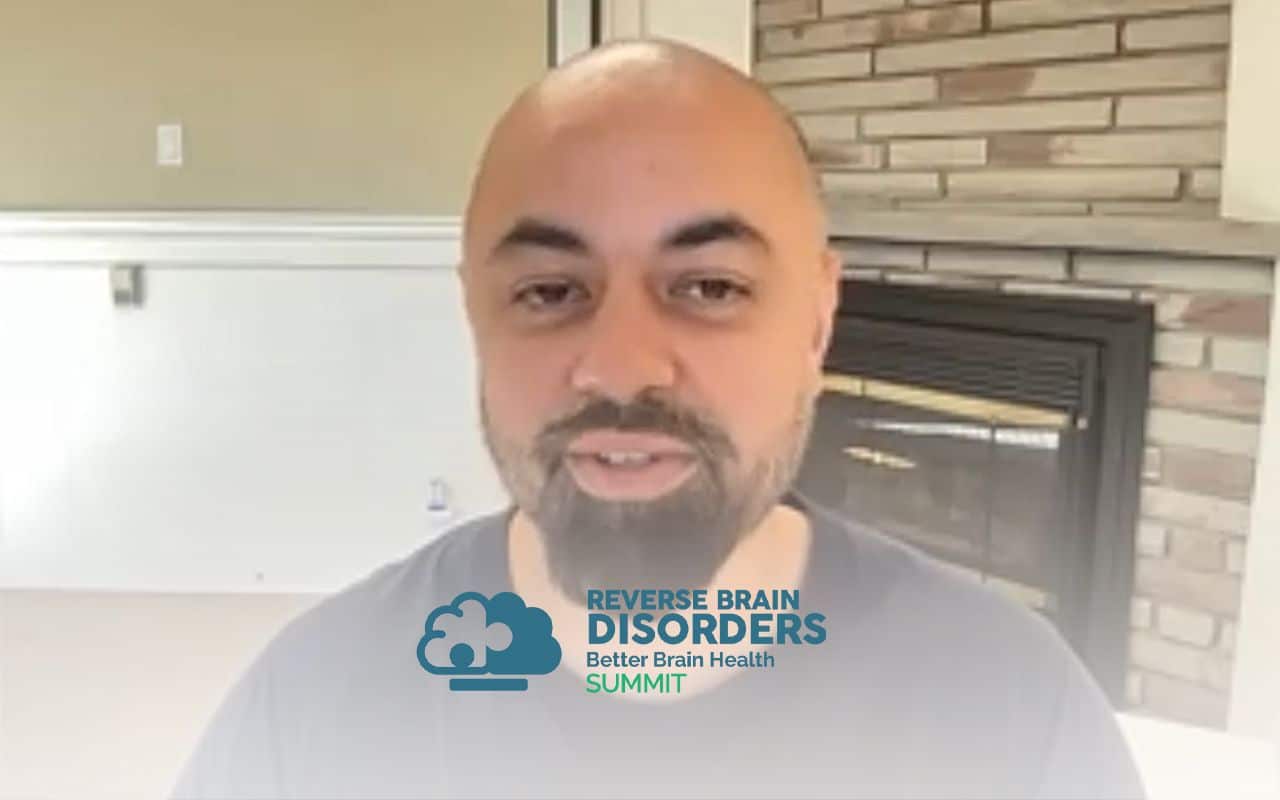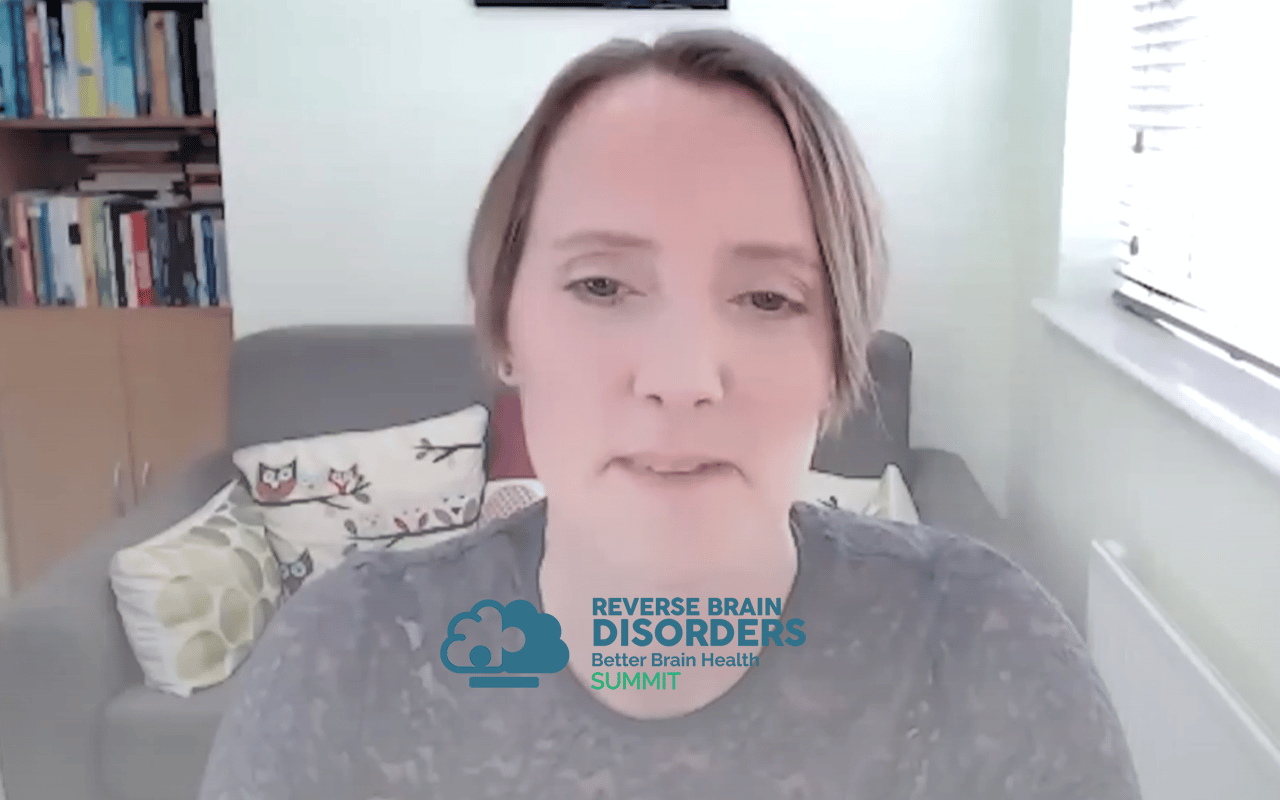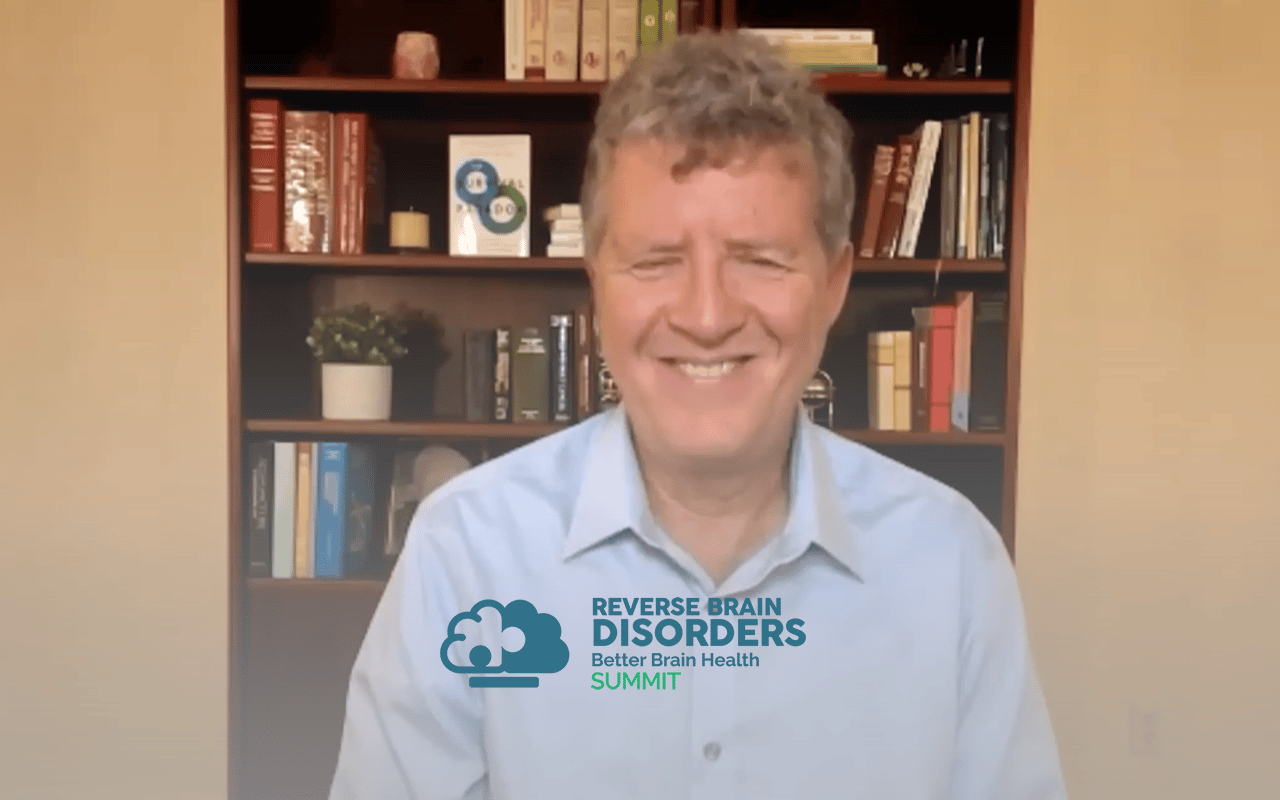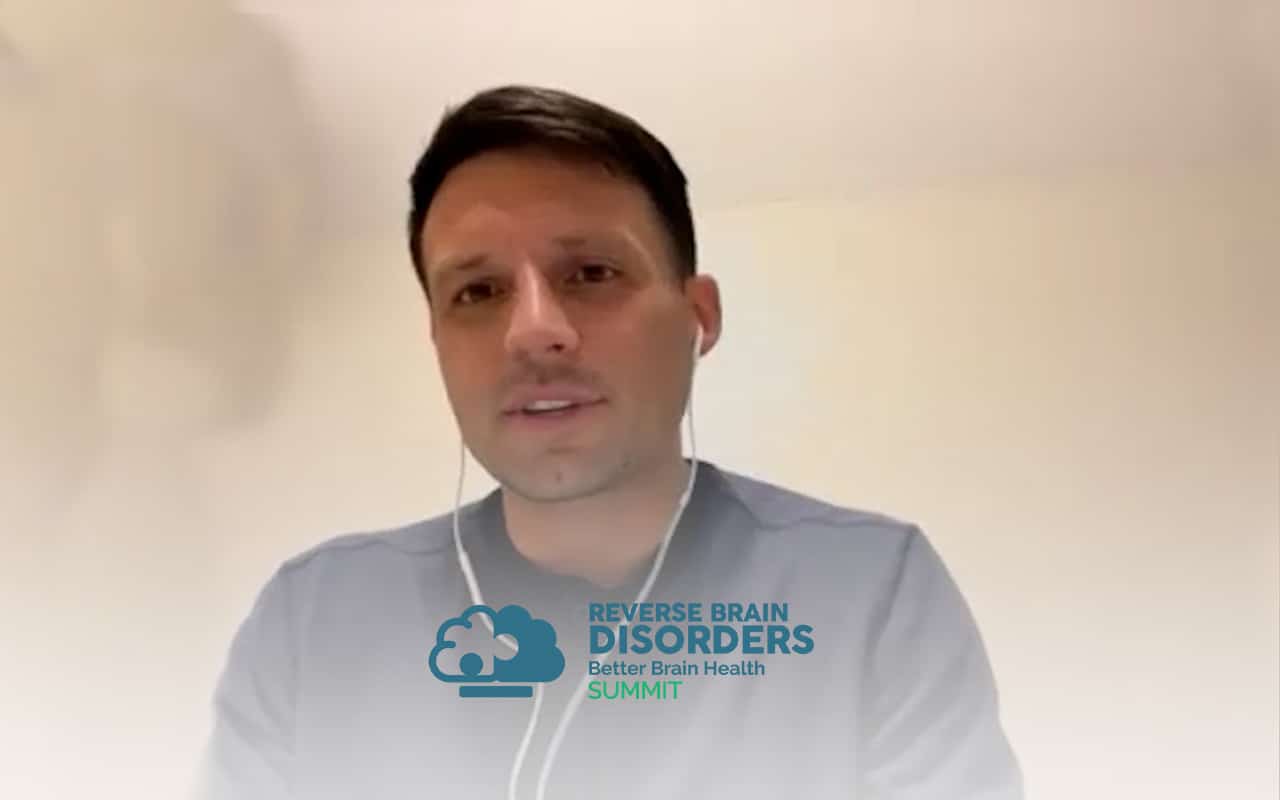Join the discussion below
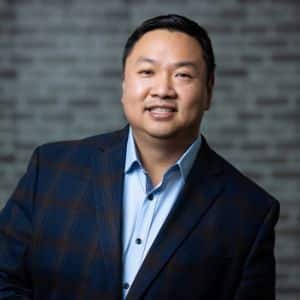
Dr. Ruan is the Founder and CEO of Texas Center for Lifestyle Medicine. He devotes his career in practicing and building systems that allow for efficient delivery of healthcare. He is a board certified internal medicine physician but also have advised with companies to improve their workflow, company culture, marketing,... Read More
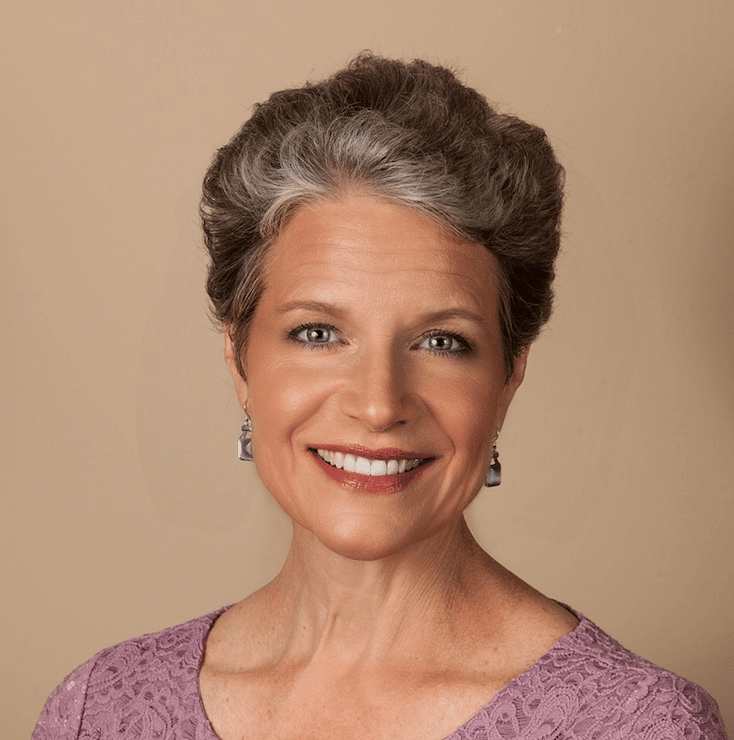
Paula Kruppstadt, MD, DABP, FAAP, IFMCP
Our Founder, CEO, and Medical Provider Team Leader, Paula Kruppstadt, MD, DABP, FAAP, IFMCP, graduated in 1990 from the University of Texas Health Science Center at San Antonio (now named UT Health San Antonio). She completed her pediatric internship and residency at William Beaumont Army Medical Center in El Paso... Read More
- Understanding autism and ADHD
- How to change your child’s degree of brain function
- The importance of gounding and playing for children and parents
Cheng Ruan, MD
One of the mystery things about pediatrics and Children is neurodevelopmental disorders such as autism or A. D. H. D. Dyslexia, dysgraphia pans pandas and whether or not you’ve heard of these before, we can always appreciate that. And Children’s things are so delicate. The brains are so delicate that we really have to optimize their health in every situation. So on this section you want to talk to Dr. Paula Kruppstadt who was one of my dear friends in Woodlands, Texas and she is an absolute leader when it comes to looking at rare diseases in your development disorders in Children. So Dr. Kruppstadt graduated in 1990 from the University of Texas and San Antonio and she completed her pediatric internship and residency at the William Beaumont Army Medical Center in El Paso, Texas. And she is more certified in pediatrics. As a fellow of the American Academy of Pediatrics. She served as a U. S. Army pediatrician at Fort Hood, then relocated to the Wilderness, Texas in ’95.
She’s since worked in a general pediatric population in functional medicine including Texas, Children’s tests and Children PD accents and Children’s urgent care. She’s a certified practitioner of functional medicine by the institute for functional medicine is one of the few board certified pediatricians in the world who are actually certified in functional medicine. She’s an expert concerning immune mediated neurological function disorders such as pans and pandas and are Texas. Governor Greg Abbott appointed to be a member of the pediatric acute onset neuropsychiatric syndrome advisory council. So the council advises the commission in Texas, legislation on research and diagnosis and treatment. Education related to pediatric acute onset neuropsychiatric syndromes. And so her practice which is hope for healing is a wonderful practice that we refer patients to here in texas and I can’t wait to introduce her to talk about neurodevelopmental disorders. Mhm. Listen, I’m so happy that you came on and agreed to talk with me about neural development of disorders and Children. I think it’s a very important topic and one of the most misunderstood topics, I think ever. So, so happy you’re here. Welcome to the show.
Paula Kruppstadt, MD, DABP, FAAP, IFMCP
Great. Thanks for inviting me. I really appreciate it.
Cheng Ruan, MD
Yeah, so let’s get started. So let’s just define what a neural developmental disorder is. Let’s just kind of start there. How do you define a neuro developmental disorder and what are the other disorders they encompass?
Paula Kruppstadt, MD, DABP, FAAP, IFMCP
Yeah. So when I talk to parents because I am a pediatrician, but I also see adults. Anything that prevents normal developmental progression. So, typical things that people hear about are A. D. D., A. D. H. D. Dyslexia, autism, dysgraphia, dyscalculia learning disabilities. But also as far as the mood spectrum is concerned, anxiety, obsessive compulsive behavior that interferes with the kiddos getting on with activities of daily living, like making their bed, packing their lunch, getting dressed in the morning. So those that’s kind of a broad look at neurodevelopmental disorders.
Cheng Ruan, MD
You know, as a parent of three young daughters, I find it really hard to discern like what’s normal behavior of my kid or what’s normal for them? And is there a spectrum when it becomes like a disease or pathological? And it’s so hard as a parent because you know it’s like I love my Children and I don’t want them to be labeled something but at the same time I want them to have help. How does a parent kind of draw the line on that one?
Paula Kruppstadt, MD, DABP, FAAP, IFMCP
Yeah that’s a great question too. Like I’m the mom of four kids 16 to almost 28 a grandma too. And if you have your first born you’re like is this normal is this not normal? So and then we also look at the temperament of our Children. Are they extroverts, introverts and their learning styles? How do they learn? Do they learn by looking visual, Do they learn by hearing? Are they kinesthetic? Do they have to move around? Usually it’s multisensory. But up until the last couple of years the developmental milestones published by the American Academy of Pediatrics in the C. D. C. I believe were spot on. You get a bell curve meaning you’ve got kids that are developmentally advanced and you have kids that are at the bottom of the bell curve but they’re still considered normal. So if you have a kid who’s really tall before they walk and if they have a large head, their center of gravity is high. So when they walk and they crawl it’s going to be different. And when they sit up than a little tiny compact person who’s lower on the growth curve. So I found it interesting that just a few years ago that they change the developmental milestones. Which is really disturbing because it goes along with our epidemic of neurodegenerative disorders and neurodevelopmental disorders. So the old milestones are a pretty good look at what’s normal but we have to become a student of our Children, everybody’s different and very unique.
Cheng Ruan, MD
Yeah. And it’s so hard these days because there’s just so much information on the internet, right? And tell people you get what you google for.
Paula Kruppstadt, MD, DABP, FAAP, IFMCP
Googling is a little scary at times and you can’t necessarily believe everything you see, so…
Cheng Ruan, MD
Yeah. Yeah. Just a lot of a lot of information out there, it’s very overwhelming especially being a parent these days. And so let’s talk about this concept of nature versus nurture, right? So there’s a lot of kids with you know, A. D. D. And stuff like that and like oh you know that’s this way as well, our granddad’s grandma’s this way, right? Is genetic this genetics play an important part into this or is it more something that’s in the environmental side.
Paula Kruppstadt, MD, DABP, FAAP, IFMCP
Great question. Absolutely, genetics plays a huge key in that because our Children are a result of us, the apple doesn’t fall far from the tree, but we tend to repeat the way that we were parented. And while we’re familiar and that’s hardwired into our brain. And so learning new ways of interacting, learning new ways to parent. And in many ways it’s breaking free of patterns that are actually damaging and not nourishing to our bodies and our emotional and mental and spiritual health.
Cheng Ruan, MD
Okay. So I’m hearing you is like genetics, but also there’s patterns that we have to recognize in raising Children as well. Right. And so let’s talk about genetic, it’s genetic something you can test for. Are these things that you see with your own patients?
Paula Kruppstadt, MD, DABP, FAAP, IFMCP
Yeah. You know, I’m very passionate about genetics because it’s what changed my life as a doctor as a mom and I’m not the same person I was 20 years ago. And so when I talk about genetics, you can actually do that relatively inexpensively but I’m not talking about 23 me an ancestry. I’m talking about a company that falls within the lines of hipAA privacy and it’s clear certified and you can do a little cheek swab on a baby that’s two or three days old and it gives you actionable intelligence about how to prevent illness going forward. And then if your child is suffering from a neurodevelopmental challenge or issue, you can halt the progression, help them recover and use this actionable intelligence to pull you back into balance and your child back into balance.
Cheng Ruan, MD
This is a test that anyone co order or should they go through like a functional medicine pediatrician to order.
Paula Kruppstadt, MD, DABP, FAAP, IFMCP
Yeah. I kind of designed my own panel and as a pediatrician I kind of took away the extraneous stuff and I use a particular company that I have a lot of faith in and I just kind of narrowed it down to the nitty gritty. What do I need to help a parent feel equipped to help set their child on a positive trajectory.
Cheng Ruan, MD
Right. Because I’ve seen a lot of these genetic panels and it can be overwhelming amount of data as well. And sometimes some of it matters and some of it actually doesn’t. And sometimes what they actually test for. It may even change year after year. So you have to be kind of updated on it. So it’s kind of like pulling your hair out sometimes. That’s for sure. So what are the areas let’s talk about some specific things we can learn from these genetic tests. Like what can we actually learn from it and how kind of modulate based on these tests?
Paula Kruppstadt, MD, DABP, FAAP, IFMCP
Yeah, you bet. That’s a great question. So what really matters. So you hear people talk about genetics and I like to look at something called non epigenetic li modifiable snips or genetic variants and that means they are what they are. They’re hardwired and if you don’t have them your debt. So it’s common things were not looking for syndromes, Deletions, chromosomal abnormalities. That’s not what we’re looking for. We’re looking for systems that we can modulate. So several different systems that I look at our something called neurotrophic or neurotrophic. What’s that mean? Neuron meaning neurological in the brain or the central nervous system? Tropic or trophic means growth. So there’s several different areas there. Then the next area and it’s the driver of all illness is inflammation. So we have a lot of inflammation.
So when we talk about inflammation, what is that something that’s hot, red swollen or painful. But when your child has a headache or they’re angry or they can’t focus. They can’t unzip their brain and say mom and dad, my brain is hot red, angry and swollen. They can just say I’ve got a headache or I can’t remember that or they look at you like a deer in the headlights and then so that’s internal and then external is you know what we as functional medicine doctors talk about so much modifiable lifestyle factors. So it’s the low hanging fruit, something that you can change so much by removing inflammatory things from your diet or getting out of your home. That was water damaged here in Houston during Harvey. So it’s that and then a topic that I’m sure on the brain summit is going to be talked about a lot is autophagy, which I like to tell parents it’s a way to clean out each individual cell in their body. It’s like microscopic detoxification.
And when I talk about detoxification, I tell parents it’s not about pooping, peeing and sweating. It’s about how their liver works and how much bluetooth ion, which is the body’s master antioxidant, how it’s made and where we need to modify it. Then a pathway called methylation, which is getting vitamin B9 into the right places of the body in the right amount at the right time. And then mitochondrial function. And I throw in some of the dietary things like dairy and gluten and their vitamin D status. So all of that comes on a little cheek swab that you can do on a baby that’s two or three days old. And that’s the most exciting thing. So.
Cheng Ruan, MD
Well we have technology’s come a long way. It seems like right? Use information to make some pretty key decisions and in child development. Right? So let’s go, let’s go back to this concept of autophagy. So the way I think about it, you know, auto is self aging means eating away. So taking away some of the damage in her body. There’s so many genes that encode for that. Also not that there’s other things such as well in the adult population. I don’t see pediatrics. I don’t know much but we utilize a lot of stuff like caloric restriction and intermittent fasting and stuff like that. Are those things also applicable to some Children to to some degree.
Paula Kruppstadt, MD, DABP, FAAP, IFMCP
Yes. You know, if you think about a baby, A Kiddo will sleep 10-12 hours. So automatically they’re undergoing some autopsy gee and I know there are other speakers, but we call it the lymphatic system, it’s the ability to clean up the brain. And so in my clinic I look at about six different genes, but on my newborn panel, which I do, even on teenagers and adults, I really focus on about three. And so I’ll just break that down a little bit. Kind of the way I talk to parents about it. Every cell in our body except for potentially red blood cells. Has these little pockets called auto vega’s. and like you said, it’s self defeating or self cleaning. And in that little pocket, when a cell undergoes all these functions, all the debris goes to that little pocket, the out of focus we have hydrogen peroxide, then something called lipid peroxide cleans it all up. All the garbage is then put out into the bloodstream and it goes to the liver, the kidneys, the skin, and you sweat it out, pee it out, poop it out. Then ideally if not, then the good recycled used parts go back to the rest of the cell to be used again.
So what optimizes that in my population of kiddos, I like to use something called d. Cairo in a hospital. And the form that I use doesn’t really have anything else added into it. And I use more for Children who have speech and language delay and for autistic Children and I use less for healthy Children. But we’ve identified these roadblocks and we just wanna make our way around this roadblock and help them have what they need to clean themselves out and get the garbage out. So it’s kind of tasteless, a little sweet and you can literally open it up and mix it with a little water, you can mix it with breast milk, you can mix it with apple sauce or colina nondairy yogurt and the parents can give that twice a day and it helps these kids not build up debris and garbage that when they’re 45 or 50 or 60 years old presenting with dementia, their parents have intervened and prevented the development of that. So you know, I like to think too is what do you do when you have a burning house first you put the fire out, then you go in and you clean the house out. So autopsy gee is cleaning the house out. Yeah. First you put the fire out before you walk in. That’s right, you put it out.
Cheng Ruan, MD
Yeah, so fire in this case I guess we’ll be inflammation. So you take away a lot of things that cause inflammation, right? The mold toxins, stuff like that. Air filters, you have it food plastics etcetera etcetera and then you go in and do the clean out. So that’s a great concept. So let me ask you this and this is probably the most asked thing by parents especially when it comes to my practice is that are these new development disorders like dyslexia and autism and asd are they all individual things by themselves Or do they are they all like on a spectrum?
Paula Kruppstadt, MD, DABP, FAAP, IFMCP
I think they’re on a spectrum and there’s not one person in the world that is like anyone else. So we can never take, yeah we can never take a cookie cutter approach. So the way Johnny with ADD shows up doesn’t mean that Susie with A. D. D. needs the same amount of concert Ritalin you know to change things. So we need to dig deep, find out what the areas of imbalance and dysfunction are all at the same time but do it in an intelligent sequence. So as not to overwhelm the parents because it starts with mom and dad and not to overwhelm the child’s body because you know, let’s face it we can’t be doing three different protocols all at the same time. You have to start with inflammation like you said put the fire out then clean the house out and there’s a lot of moving parts so I just like as parents you know so many times we feel guilty.
We’re like well I gotta do this, I gotta do that and that doesn’t help anyone because just thinking about that is inflammatory. So I’m just like, breathe, breathe started step one and just like you, we have health carriages that help our patients unpack this and implement this. So, going back to the original question, I believe that neurodevelopmental disorders are all on a spectrum and I believe that you can halt every single one of them. And I believe that you can return function. I have Children in my practice that no longer have the diagnosis of autism and I’ve cried many a tear with some of those parents and you don’t hear about that, they’re just like, okay, go to a B. A therapy. It is what it is. Just accept it and move on and there’s nothing you can do, which is not true. There’s always something that you can do to modify the outcomes and restore balance.
Cheng Ruan, MD
That’s great. And to hear that it’s pretty inspiring because we don’t hear about like this, right? And like every case is different. You know, some cases, there’s no reverse ability, just like, you know what we do in Alzheimer’s dementia and Parkinson’s practice in some cases, there’s a huge amount of reverse ability in some cases, there aren’t, but you know, there’s, there’s always should be some level of Pope, right?
Paula Kruppstadt, MD, DABP, FAAP, IFMCP
Yeah, I’m sorry, I didn’t mean to interrupt you. I think one thing as a parent, the last thing you need to hear is there’s no hope and there’s nothing you can do with Children. There’s always a way to turn it around the degree of function that returns. You know, it’s it’s only as strong and as positive as what the parents are willing to put into it and the cards that a person has been dealt genetically and how you can get around those roadblocks, right?
Cheng Ruan, MD
Yeah. It’s such a hodgepodge of different things. And sometimes, you know, those parents out there and say, hey, I’m not doing enough for my child, but always remember there’s a huge genetic component to it as well, and every person is different, so it doesn’t necessarily need to have a blame one way or another. Now, I’m saying this is because, You know, I deal more with the Children taking care of their parents because they’re much older, you know, plus 40 years on top of that, right? And we’re seeing Children trying to take care of their parents and the Children always having the guilt of I’m not, you know, they already have Children of their own, plus they’re trying to take care of their parents, so they’re kind of stuck in the middle and they’re like, I’m not doing enough, I’m like, you know what? Sometimes genetics play a big part into this, right? But there’s things that we can modify, we just have to keep on learning how to do it, So speaking of which I’m gonna transition to talking to something that you mentioned earlier is that sometimes negative thoughts or, or Dr. Daniel Amen likes to call it automatic, negative thoughts can actually create inflammation, like physical inflammation on the brain. So you can just kind of dive a little bit into how thought processes, trauma and patterns, and thought patterns can actually affect someone’s physical outcome when it comes to neurodegenerative disorders.
Paula Kruppstadt, MD, DABP, FAAP, IFMCP
Absolutely. You know, there’s a great book written by a position called the body keeps score and when people think about the emotional, mental, spiritual, physical sexual abuse that they’ve experienced in their life, we tend to compartmentalize it and people compensate by their identity is find in what they do, what they have and what their title is. And I think that becoming self aware, I think everybody needs therapy. I think everyone needs someone to walk along the journey of life with them if they’re willing to humble themselves and be teachable and look into those things from the past that cause our heart to stop. And so when we think about trauma and Children and parenting, so just like you, you’re dealing with adults caring for adults that have their own Children, we see that in our practice too. But for me, I care for the parents who are taking care of the child with a neurodevelopmental challenge wide spectrum from johnny’s in first grade. He can’t keep still and he keeps getting in trouble and his suffering from, I’m dumb, I’m stupid, I’m a defect. So those negative thoughts, I think that as a parent, Number one, we have to evaluate where we’re at and what we heard as a child and then how we’re showing up as a parent. And so part of the thing that I do, pediatrics is 80% interacting with the parents and motivational interviewing and grieve life into a mom and dad who are tired and broken.
They’re both working jobs, They’ve got three kids, they’re trying to make, you know, it’s like how can I get the dairy out of my kids diet or how can I get the gluten out and how can I incorporate movement and how can I incorporate stimulating the vagus nerve? So my kids not anxious all the time. So your original question about trauma and automatic negative thoughts, I think as parents, they need to look at what their positive character strengths are and that’s where I think that health coaches play a huge piece and they need to remember not to repeat out loud. Like that was a stupid thing to do to catch themselves and because what does the child here they hear? I’m stupid, It’s okay to correct a child and if it’s something like threatening, we’re going to say no and grab them and move, but it’s all about how we phrase our questions and how we talk to ourselves and change that inner tape, I’m dumb, I’m stupid, I’m a crappy parent, why is this happening to, you know, I’m an intelligent human being and I can learn and I love my Children and I think the biggest thing to help us with our trauma and our negative thoughts and you’ve said this is gratitude.
It’s, we have little gratitude books in every exam room, one for mom and dad and one for Children and it’s like, hey, what are you thankful for? And the biggest thing is is I have a party to go poop on and I have indoor plumbing and I have a brother that I get to play with, you know, it’s just picking out little things and so it’s changing our mindset and I think in functional medicine, we’re all aware of if a person is in pre contemplation there thinking I’m going to do this, they have, they want to do something versus they’re ready and I can do something. So it’s moving them to the place where they know that I can and these are my tools to get there. So it’s all about creating an intelligence sequence and breaking it down into little pieces and when it comes to our parenting, parenting is a mess, it’s just messy and things happen and grandparenting is like that too, but now that I’m a grandparent, I can go, this is okay, I’m, I’m right, you know, I’m okay with this, I get to give them back. But it’s just finding joy in the midst of the every day and being present and not thinking about your to-do list like we do as doctors. So there you have it, there’s my dump,
Cheng Ruan, MD
That’s such great points and if all the things that we talked about that’s so complex within our conversation, that’s probably the most important part is finding the gratitude and joy. Despite anything that comes and you know what, it’s, you know, life is not supposed to be great all the time, you know, because great is relative to only something that’s not so great. It’s always a dance, it’s always a dance between fears and passions and so that’s what life really is and what we have to recognize so that we can heal ourselves and then we can heal, we can help the people around us heal as well. So one of the, that’s the really, really great advice. So let’s talk about some, some practical tips, some practical things that parents can do to really start the process of rebalancing their child’s immune systems and neurological symptoms. What are some of the practical tips?
Paula Kruppstadt, MD, DABP, FAAP, IFMCP
Well, at least here in Houston with our history of hurricanes. One of the things when I think about external inflammation is making sure that the inside of their house and the wall cavities of their home are not moldy or water damage. So that’s one thing. But the biggest needle mover that can correct inattentiveness and focus in Children is by putting quality food into their body. So, and that doesn’t people think, oh, it costs so much to eat clean. Actually, it doesn’t cost as much as driving through a fast food joint. So I’ve got a family, they’re going taking their A. B. A. Therapy and they’re like, I don’t have the money to do this test. And I’m like, well let’s break down the finances or the health coach does this. And they found out that they’re using $364 a month going through fast food, that’s inflammatory on their way to therapy, negating the effects of therapy.
So eating real food. So by that, I mean, look at environmentalworkinggroup.org, wg.org. Look at the dirty dozen queen 15. You don’t have to buy all organic shop the periphery of the grocery store, pick real fruits and vegetables and change them up seasonally. Organic chicken, beef bison, wild caught salmon. And if you’re not a big meat eater, which I’m not, I use a lot of quinoa That I soak for 48 hours, lentils and legumes. I soak for 48 hours to kind of sprout them and break down the electrons, which are inflammatory and that’s real food. So getting enough protein, carbon, fat that’s clean. So that’s that’s number one and that’s the most important thing a parent can do is put good food in because garbage in equals garbage out and the garbage out is their neuro developmental challenges. Number two I think is reassuring that your child has quality sleep. When we look at, yeah, it is, so many Children have tongue ties and large adenoidal and, and chancellor tissue and they have a jaw that is not appropriate. They’re not structurally aligned so they don’t create a good airway. So that’s something that we look at on a nutritional physical exam and referred to some amazing practitioners in the Houston area and make an airway, getting your kids grounding and by grounding, I mean barefoot on concrete, not asphalt, dirt or grass for 15 minutes a day when the weather is good and get them moving and that can be sidewalk chalk a great way to calm them down.
If they’re having a temper tantrum or a fight is turn on loud music, dance and sing out loud because singing stimulates our vagus nerve, which calms the stay and then blowing bubbles and then, you know, if they have relationships with other Children that pull them into activities and are saying things that are not life giving, we’ll choose your company when you hang out with goals, you become like them And then lastly, stress, I find that parents are trying to keep up with the joneses and they are running their kids to swimming and taekwondo and Boy scouts and art lessons, I would minimize the activities and try to bring it home a little bit and change that into game night or time that you unplug. And the last two modifiable lifestyle factors that we’ve added to our team is time and finances and our health coaches kind of take a deep dive and you’ve got to take those moments with your kids and invest. And that’s why I think precision genetics are just so important because you can be proactive and prevent the onset and you can have that information and stop it and pull it back. So that’s what I recommend to move the needle.
Cheng Ruan, MD
Those are really great points. And as you’re talking, I’m thinking, hey, I’m having a checklist of myself. Like I think we’re on the right track, you know? Yeah, but you said earlier is about the grounding. My gosh, walking bigger foot onto the concrete that’s an interesting one. Like where, where did that come from?
Paula Kruppstadt, MD, DABP, FAAP, IFMCP
Yeah, you know, that’s a really great question. And actually when I heard about it, there’s like a whole website and a book and there’s like 15-20,000 different studies published about the influence of elect the magnetic fields in our world and then how we can ground ourselves. So if you think about how the earth is struck by lightning and in our daily lives we are built up trauma balls just driving on the roads in Houston or anywhere. So when we stand on the earth, concrete, dirt or grass barefoot, I’m like, if you have a balcony and you live in an apartment and there’s concrete, that’s not gonna work, it’s got to be touching the earth, it helps pull some of that acidity, an abnormal electrical charge into the earth. That’s why walking along a beach is so good for you, The salt, the water and the ground. And like this morning I was sitting on my porch barefoot, you know, drinking Michael.
Cheng Ruan, MD
It’s been such an amazing discussion with you and I wish we can talk forever, but we can’t. But how do people find you? What’s your website? How can people find you on social media?
Paula Kruppstadt, MD, DABP, FAAP, IFMCP
Right. Our website is get G E T the number 2 the root.com. get2theroot.com and I have an amazing team. We’ve talked about health coaching, but other m d we treat womb to tomb. But I am focusing on these kiddos that are seeing numerous sub specialist. Getting back to what I’m passionate about. So get2theroot.com and we have social media sites to Instagram, Facebook et cetera and thanks so much and I think for parents, just to remember look at yourself, but tell your Children, you are loved, you are kind and the world is a better place because you’re in it. And that’s just really important. And I say that to some these kids too, because so many times if they’re coming to see me, they’re like, something must be wrong with me. And I’m like, you’re an amazing creation. We’re just trying to get you to where you feel good and you’re happy and you have a lot of joy. And I can’t wait to see what the world is like when you’re older. And I’m treating grandkids of patients now to not grandkids Children of former patients when I moved to Houston. So it’s really exciting.
Cheng Ruan, MD
Well, that’s amazing. Such a rewarding, rewarding journey for you. So awesome. Well, thank you for being on. Appreciate it. We’ll close it out here. Thank you.
Paula Kruppstadt, MD, DABP, FAAP, IFMCP
Thank you very much.
Downloads

